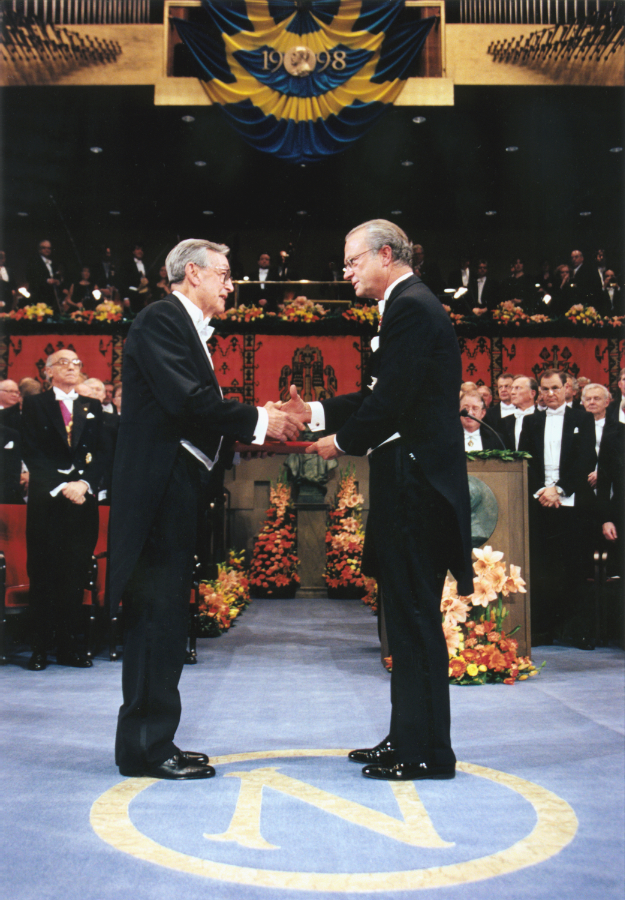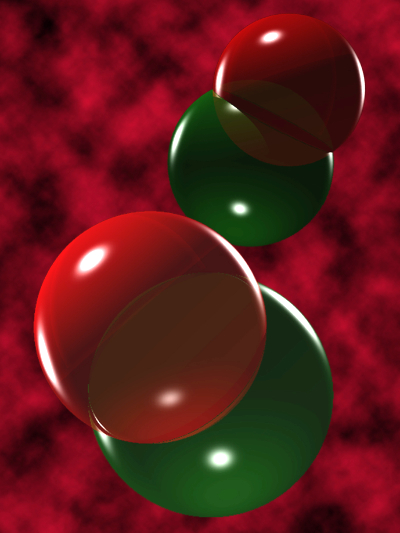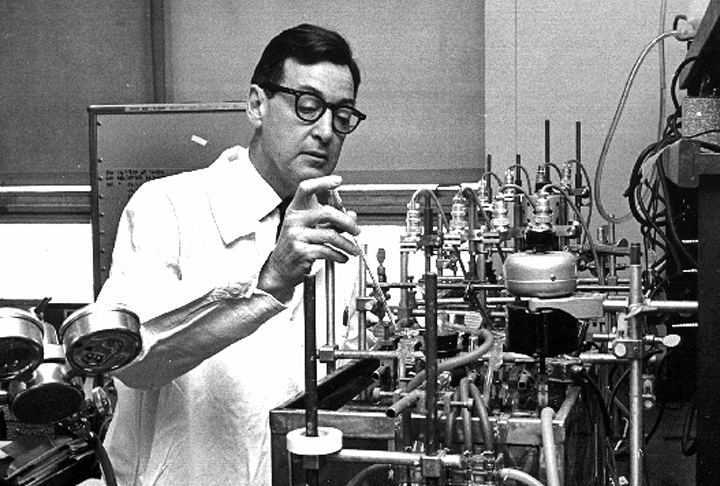A Quarter Century of Cardiovascular Discovery: Honoring Dr. Furchgott’s Nobel Achievement
By Office of the President | Jan 9, 2024

On December 10, 2023, SUNY Downstate marked a significant milestone by commemorating the 25th anniversary of Robert F. Furchgott, Ph.D., being honored with the Nobel Prize in Physiology or Medicine for his monumental contributions to cardiovascular research. This commemoration served as a poignant reminder of the enduring impact of Dr. Furchgott’s pioneering work on the scientific community and the world at large.
In 1998, the Nobel Prize in Physiology or Medicine was bestowed upon Dr. Furchgott, alongside his esteemed colleagues, Louis J. Ignarro, Ph.D. (UCLA School of Medicine), and Ferid Murad, M.D., Ph.D. (University of Texas Medical School at Houston). Their groundbreaking revelations regarding the role of nitric oxide as a pivotal signaling molecule within the cardiovascular system earned them the highest recognition in the field. This momentous accolade not only celebrated the individual achievements of these distinguished scientists but also underscored Dr. Furchgott’s unwavering commitment to unraveling the intricate mysteries of vascular physiology. His relentless pursuit of knowledge not only reshaped our understanding of the cardiovascular domain but also left an indelible imprint on the realms of science and medicine, setting a standard of excellence for generations to come.

Dr. Furchgott’s most significant breakthrough revealed that the endothelium, a single layer of cells lining blood vessels, generates a substance that induces relaxation in the underlying smooth muscle. Also called endothelium-derived relaxing factor (EDRF) by Dr. Furchgott, this substance was later identified as nitric oxide (NO). His discovery made nearly four decades ago, triggered extensive investigations into nitric oxide, unveiling its pivotal role in numerous biological and clinical processes.
Nitric oxide’s impact extends beyond the relaxation of smooth muscle, also playing a crucial role in regulating blood circulation and the immune system’s infection-fighting capabilities. Dysfunctional release of nitric oxide has been linked to various cardiovascular and pulmonary diseases. In the brain, nitric oxide assumes a pivotal role in cell communication, potentially influencing memory, pain perception, addiction, and various psychiatric conditions. Moreover, its ability to inhibit platelet accumulation and promote bronchodilation further underscores its significance.
 The groundwork for contemporary receptor pharmacology owes much to Dr. Furchgott’s
early endeavors, notably his development of tissue preparations to investigate drug-receptor
interactions within vascular smooth muscle. Furthermore, his thorough investigations
into the photo relaxation of blood vessels and the factors influencing cardiac muscle
contractility earned him the respect and esteem of his peers, laying the groundwork
for his revolutionary discovery of EDRF.
The groundwork for contemporary receptor pharmacology owes much to Dr. Furchgott’s
early endeavors, notably his development of tissue preparations to investigate drug-receptor
interactions within vascular smooth muscle. Furthermore, his thorough investigations
into the photo relaxation of blood vessels and the factors influencing cardiac muscle
contractility earned him the respect and esteem of his peers, laying the groundwork
for his revolutionary discovery of EDRF.
Dr. Furchgott’s unexpected discovery on May 5, 1978, when he observed an unanticipated relaxation response in rabbit aortic strips, marked the beginning of a transformative journey. This unexpected event catalyzed his research over the following two decades, ultimately culminating in the identification of EDRF as nitric oxide in 1986. Throughout this remarkable scientific odyssey, Dr. Furchgott’s unwavering humility and unrelenting dedication to the pursuit of knowledge shone brightly. His response to receiving the Nobel Prize underscored the significance of embracing unexpected findings in scientific exploration, a testament to his enduring commitment to the advancement of science and medicine.
Throughout his illustrious career, Dr. Furchgott’s steadfast dedication to pharmacology and his innovative research approach significantly advanced our understanding of cardiovascular health and disease. His discoveries have had profound implications for treating various conditions, particularly heart disease, and continue to inspire generations of scientists.
Dr. Furchgott served as Chairman of Downstate’s Department of Pharmacology from 1956 to 1982. He died in 2009 with a lasting legacy in cardiovascular research and medicine.
Tags: Honors